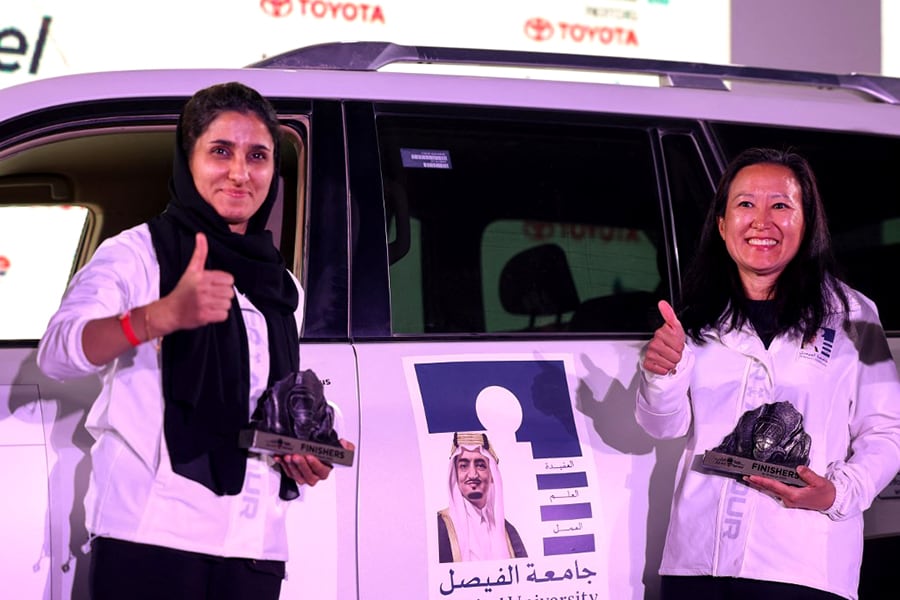
They just got their driver's licenses. Now they are going off-road
Rally Jameel (means beautiful in Arabic) ushered in the era of women's motorsports in the Saudi kingdom
 A picture taken on March 19, 2022 shows UAE's driver Atefa Saleh (L) and her co-driver US Eleana Coker celebrating after they won the second place in Rally Jameel, Saudi Arabiaís first ever women only motor rally, in Riyadh on March 19, 2022. (Photo by Fayez Nureldine / AFP)
A picture taken on March 19, 2022 shows UAE's driver Atefa Saleh (L) and her co-driver US Eleana Coker celebrating after they won the second place in Rally Jameel, Saudi Arabiaís first ever women only motor rally, in Riyadh on March 19, 2022. (Photo by Fayez Nureldine / AFP)
HAIL, Saudi Arabia — The starting line for the Rally Jameel was drawn in 2017, when women in Saudi Arabia earned the right to a driver’s license. Last month, the ceremonial green flag finally fell on the kingdom’s first all-women rally at Qishlah Palace in Hail, waved by Prince Abdulaziz bin Saad bin Abdulaziz, and Saudi Arabia marked another historic beginning for women.
The rally (Jameel means beautiful in Arabic) ushered in the era of women’s motorsports in the kingdom. Rallying, or desert racing, originated in the early 20th century. Racers drive long distances, typically in stages, over rough off-road terrain in modified vehicles. Often courses, such as the famous Paris-Dakar Rally, include checkpoints or waypoints where drivers and navigators collect points as they plot their way to the finish line.
“Getting here and being in our first drivers’ meeting gave me goose bumps,” said Atefa Saleh, 41, a Siemens engineer from the United Arab Emirates. “I’m excited to be the driver. But we’re switching if something goes really wrong,” she quipped.
Saleh’s co-driver, Eleanor Coker, 48, is an American living in Saudi Arabia. She had an unusual method to prepare for her navigation duties. “My son came home from school and caught me on his PlayStation doing the Dakar game,” Coker said, referring to Dakar 18, a racing simulator.
Before 2017, Saudi women could hone their driving skills only by playing video games like Grand Theft Auto and Gran Turismo. It was time to get out on the dirt and have a little fun.
©2019 New York Times News Service







